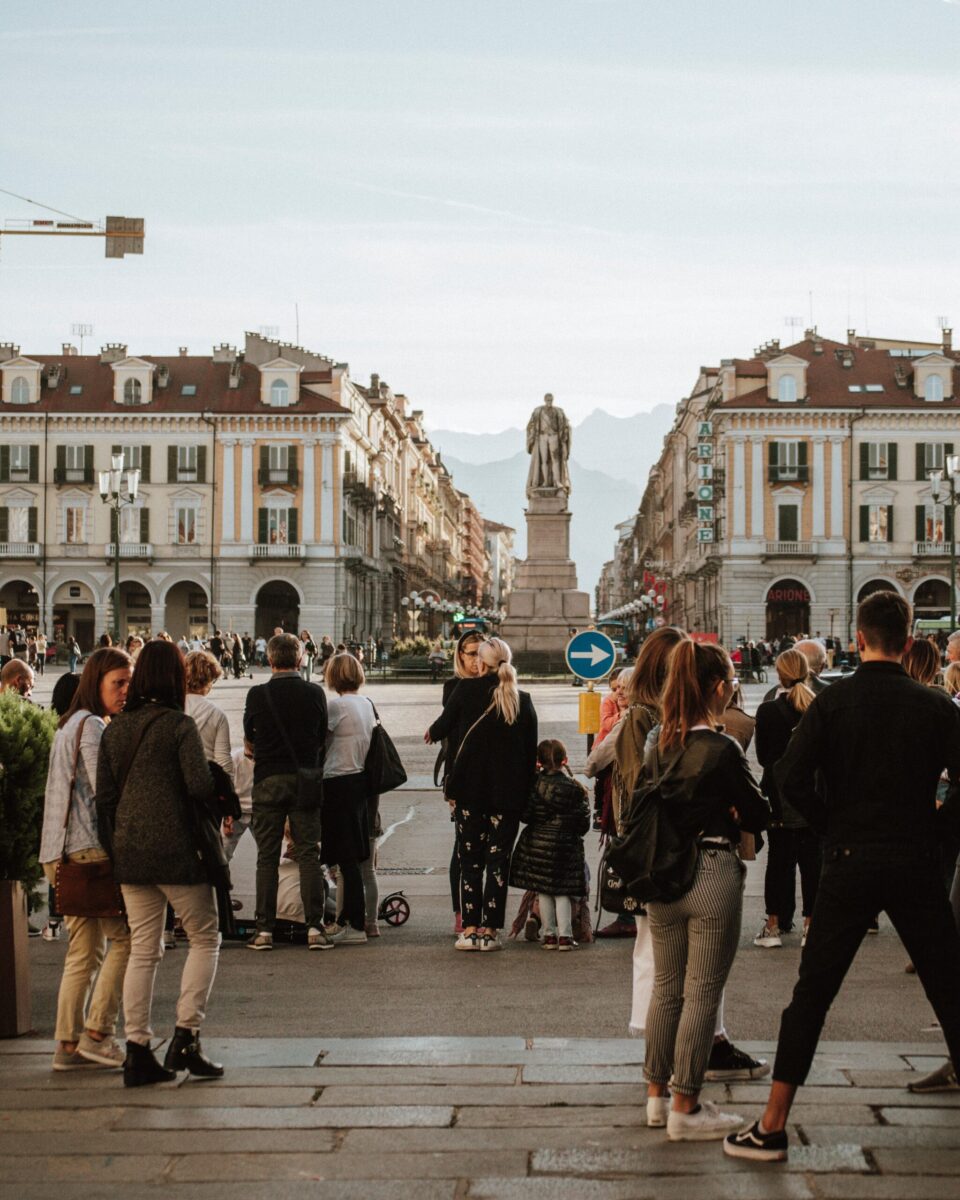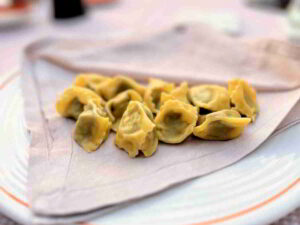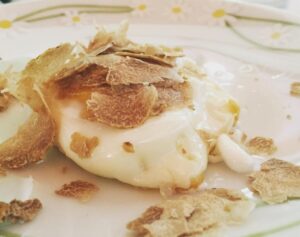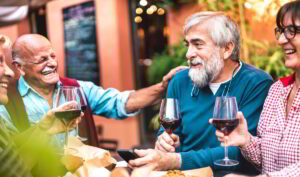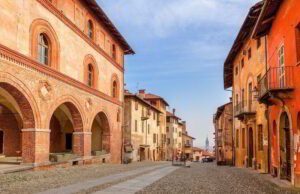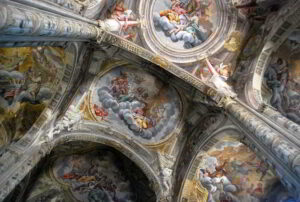CUNEO
Exploring the Town of Cuneo, a Gem of Italy’s Piedmont Region
Nestled in the southwestern corner of the Piedmont region in northern Italy, Cuneo is an undiscovered and underrated gem often forgotten by tourist itineraries.
Cuneo is a charming and compact city waiting to captivate your heart. Steeped in rich history and surrounded by the majestic snow-capped Alps, the Old Town is the terminal part of a cliff eroded over millennia by the rivers Stura di Demonte and Gesso.
The pointed shape of this natural formation is a wedge, in Italian, “cuneo”, which many believe is the root of the city’s name.
A guided tour of Cuneo is the best way to delve into the evolution of this strategic urban settlement, influenced by its proximity to several alpine passes, a crossroads since the Middle Ages.
Whether exploring historic cathedrals, meandering through vibrant markets, or simply enjoying the peaceful ambiance of the surrounding alpine valleys and outdoors, Cuneo promises an unforgettable journey to an authentic and undiscovered Italy.
Historic Highlights of Cuneo
Unlike Asti or Alba, Cuneo was not established by the Romans, who settled in nearby Val Vermenagna—one of the Alpine valleys—in places like Pedona, Roccavione, and Robilante.
As a significant part of a Piedmont tour, Cuneo is essential for grasping the different rulers who impacted the region, each leaving an imprint on the town’s architecture and culture. The traces of these historical periods are still visible in the picturesque streets and historic buildings that define the cityscape.
The natural rock formation, safeguarded by the two rivers now surrounding Cuneo, started to be populated only in 1198 when it was recognized as a free Commune. Throughout its history, Cuneo has been a pivotal point for conquerors, enduring seven sieges from 1220 onward.
It has always governed several Alpine passes that link Italy to France, holding considerable political and economic significance. In 1817, it became the seat of a bishop, and by 1859, it was established as the provincial capital.
A Tour of Cuneo from Piazza Galimberti and Via Roma
A tour of Cuneo usually starts from the central Via Roma, which connects the wedge’s point to the large Piazza Galimberti, named after the National Hero of the Italian Resistance.
The 1800s porticoes frame the rectangular square with shops and cafès where locals gather for an afternoon coffee or Sunday morning stroll. In the middle of Piazza Galimberti stands the monument of Giuseppe Barbaroux, the author of the Constitution granted to the inhabitants of Piedmont by King Carlo Alberto in 1848.
Like other towns in Piedmont, Cuneo used to host the market in the middle of the main street. For this reason, Via Roma is surprisingly wide compared to other medieval streets, while the side porticoes provided cover in case of bad weather.
Cuneo’s Churches and Museums
Along Via Roma, next to the Bishop’s Palace, lies the ornate doorway of St. Ambrogio Church, adorned with the icon of the bishop’s hat.
The unusual presence of St. Ambrogio, protector of Milan, emerged after 1230 when the Milanese rebuilt the city following one of the many sieges. As Cuneo planned to express gratitude to Milan by constructing a church at this pivotal point, the actual building took place only in the 16th century at its current location.
Wandering through the backstreets of the town center, towards Santa Croce and the Franciscan monastery, we visit the Civic Museum and the nearby covered market, whose pillars display Liberty-style elements.
In the courtyard of City Hall, there stands a copper reproduction of a car prototype named Ceirano 1903, after the family name of two Cuneo-native brothers who established several car factories in Turin at the end of the 19th century.
Back on Via Roma, the Tower Palace and the Civic Tower, built in 1317, remind us of the city hall’s original seat.
Things to do in Cuneo: the Cathedral and the Jesuits Church
The tour of Cuneo continues with the Cathedral, originally built on the site of a humble countryside chapel dedicated to the Virgin Mary. It became a parish church in 1583 when it hosted fourteen private altars belonging to prominent families and artisans’ guilds.
In terms of architecture, the church began to take the size we see today in 1620 with the project of local architect G. Boetto. The dome was added in the 1800s, along with the frescoes that decorate the interior.
Around the corner from the Cathedral stands the Church of Santa Maria della Pieve, once owned by the Jesuits, who commissioned the same architect, Boetto, to begin planning in 1655.
The high altar painting represents the Circumcision of Jesus, created by local painter B. Caravoglia. This subject serves as a reminder of the church’s original dedication to the Jesuit order.
The Heart of Cuneo: Contrada Mondovì
The most picturesque part of Cuneo is Contrada Mondovì, formerly known as Judean Street, since the Synagogue and the entire neighborhood up to the Gesso River were home to the Jewish ghetto.
Via Mondovì was the first street in Cuneo to be lit at night, and recent restorations have transformed it into a cozy social gathering spot. During Christmas time, the street is adorned with artistic light displays, and in summer, it’s bustling with outdoor seating from local restaurants.
For many Italians, Cuneo brings back memories of the decades when military service was mandatory for the male population. Thousands of recruits had to spend the first part of their training in the city. Old barracks are still visible within a short walk from Via Roma.
Antonio De Curtis Square, named in honor of Totò, the famous Neapolitan actor, evokes memories of 1950s films in which he mentioned Cuneo. The city and military service were referenced with his unique and sarcastic sense of humor, which still resonates today.
Piazzetta De Curtis is located next to the Toselli Theatre.
Day Trips from Cuneo on Piedmont’s Alps
The city of Cuneo serves as an excellent starting point for various day trips to alpine valleys leading to the French border.
As an example, Val Grana, with its Sanctuary of Castelmagno, is a popular excursion in a valley that maintains its wild character, making it a great destination for hikers. Castelmagno cheese, made from cow’s milk, is produced in only three villages, where cozy dairy farms welcome visitors.
The Certosa di Pesio, is a monastery located between Cuneo and Mondovì, is worth a visit in the province of Cuneo.
In addition to summer and winter sports, Valle Stura holds historical significance with the Roman settlement of Pedona, in the modern town of Borgo San Dalmazzo.
Just a few miles from Cuneo, a tour of Piedmont can include the village of Boves, known for the countryside chapel Madonna dei Boschi. The interior of this church is entirely adorned with frescoes from the 15th century. The province of Cuneo is rich in Romanesque chapels, natural beauty, and a wide array of activities spread across several alpine valleys.
A popular tour of Piedmont takes you through the alpine pass Colle di Tenda all the way to Nice, Monaco, and the French Riviera.
In addition to summer trekking and hiking, winter is a favorite season in these alpine valleys. Snowshoe and cross-country ski enthusiasts can explore miles of trails in pristine nature, like in Val Maira.
Among the many ski resorts in Piedmont equipped with ski lifts, Limone Piemonte offers about 80 km (50 mi) of slopes open in winter.
Book A Tour Guide in Cuneo
From 150€ | 2 hours | Private, just for your party, up to 15 guests
Museum entrance tickets are not included

